Search
Recent
- Richie & Shelli on YouTube
- Eric Atwood Actor Reel
- Cloud Storage Solutions
- File and Folder Structure for Zoom F6 MultiTrack Field Recorder
- Carla Delaney Actor Reel
- DCP Package Creation
- Miriam Graves Reviewed on The Movie Blog
Categories
Mission 8 Pre-production
Behind The Scenes, Mission 8, Production | July 6, 2014
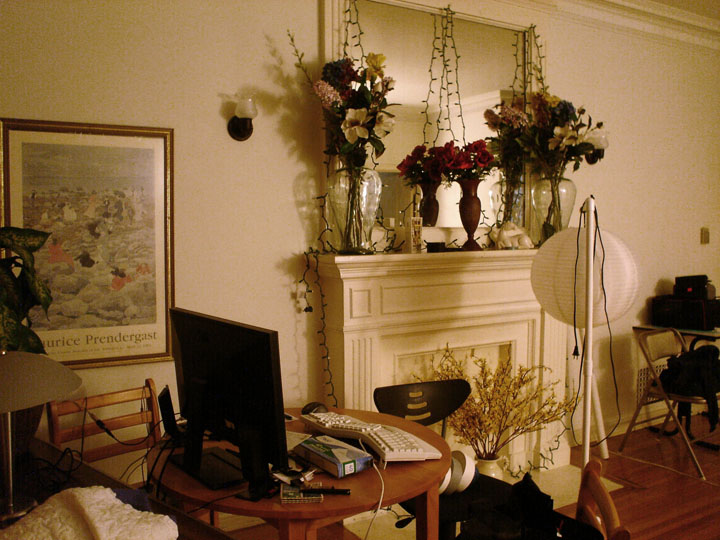
The set location in Los Angeles. Pictures, books, flowers, candles, plants, ornaments and holiday lights were placed in the apartment location to create a seemingly inviting space. The computer was moved away from set and later used as a DIT station and editing bay.
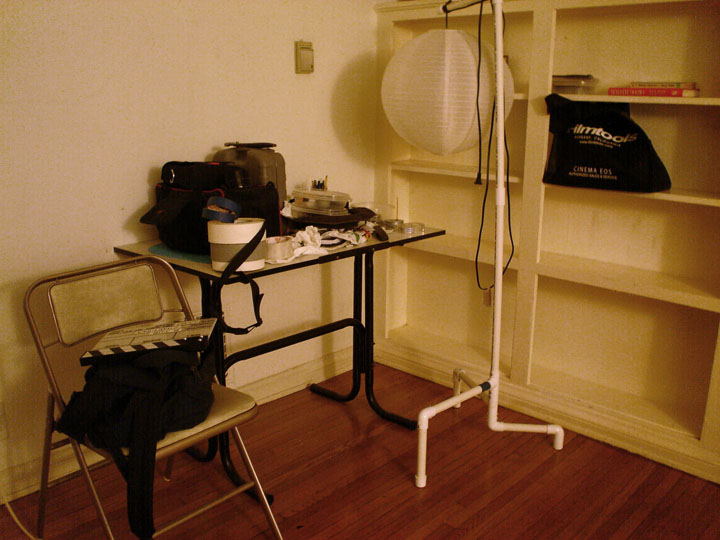
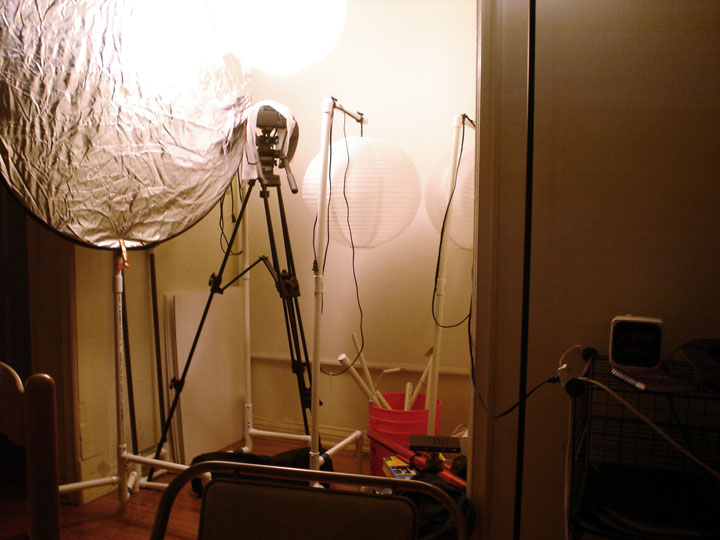
Most of the camera and lighting equipment was set-up prior to the shoot to save production time. The C-Stands were hand-built with PVC pipe and fitted with China Lantern Balls. Some of the filmmaking tools and supplies were sourced from unlikely places: Home Depot, eBay, dollar stores, thrift stores, and from Hollywood productions when materials were discarded on location shoots.
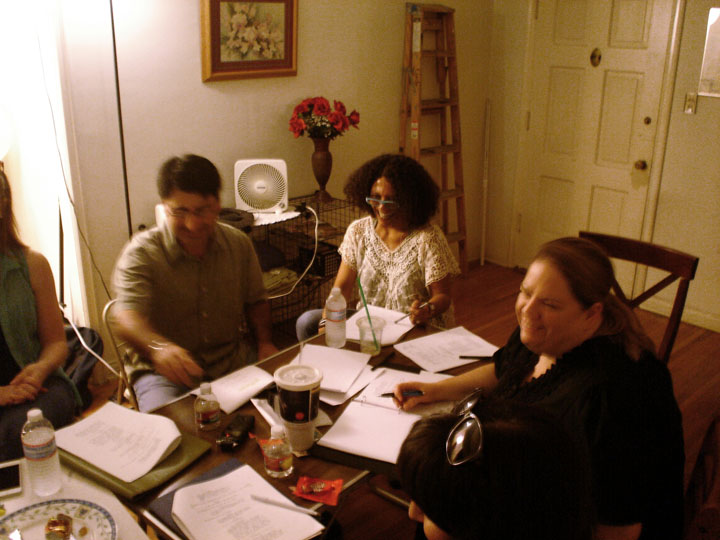
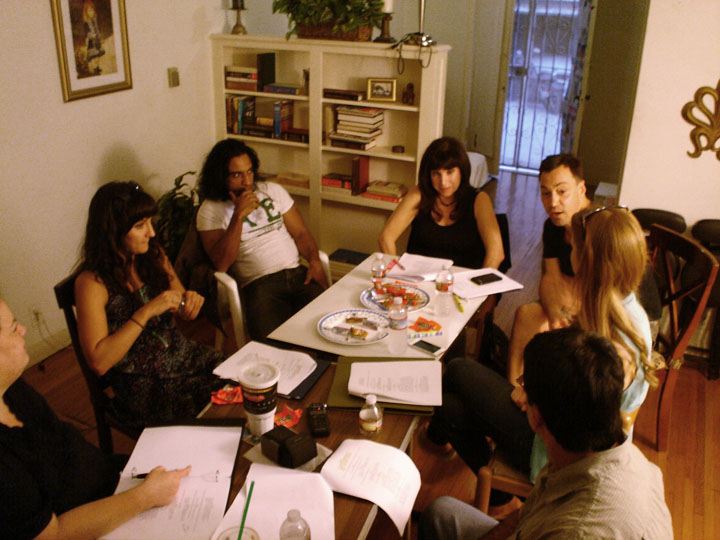
The actors won their roles but the chemistry among the cast was unknown until the first table read. The read-through was done several times that allowed the cast to feel comfortable working together. A digital audio recorder was placed on the table that recorded the entire session.
The first read-through was done with the cast acting from the script. A second read-through was done with no acting. The writer then made changes to the dialog that better matched the natural speech of the actors. The script supervisor made sure each copy of the script was updated.
A third read-though was done without the script, to allow actors to play off each other and improvise lines that would later be added to the final shooting script.
Angelo Bua (Ridley), Eugenia Arbol (Ingrid), Shelli St. George (Script Supervisor), Becca Leigh Gellman (Lisette), Earl Reginhard (Ajay), Paula Drake (Priscilla) and Leslie Stratton (Katherine) at the table read.
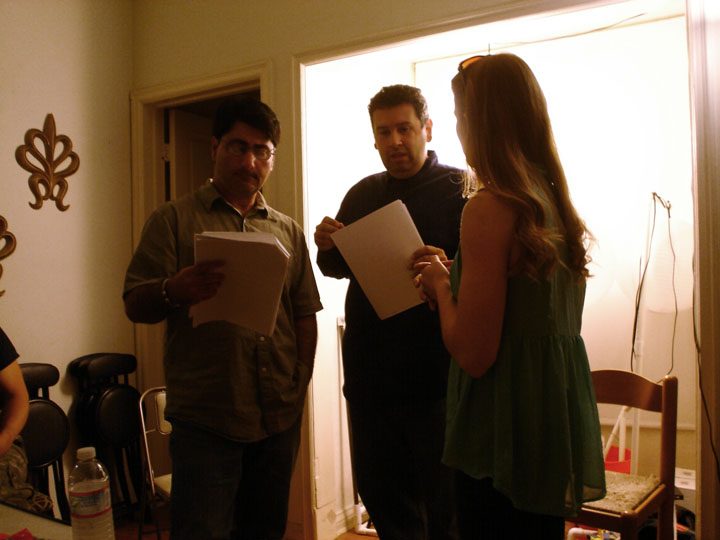
A fourth read-though was done with all actors standing with basic instructions on blocking. This allowed the actors to acclimate to a shooting environment, their fellow castmates, and take direction. For the director, it allowed him to establish where the camera would later be placed.
Angelo Bua (Ridley), Richard Tur (Writer, Director) and Leslie Stratton (Katherine).
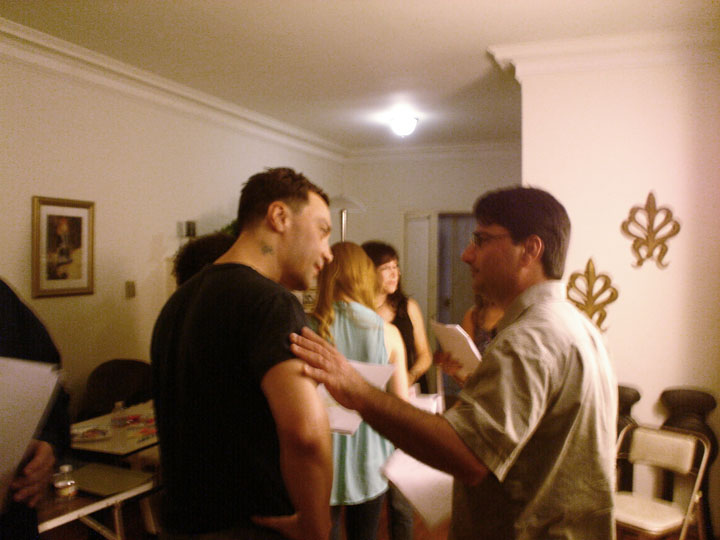
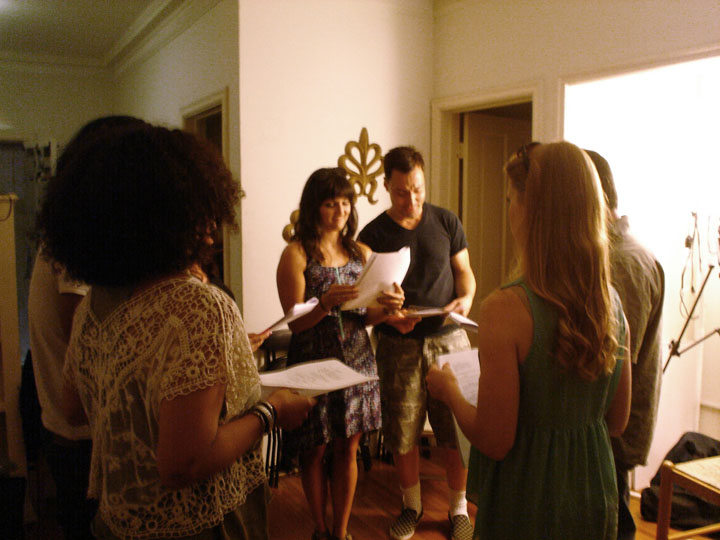
The role of the filmmaker, beyond storytelling, is to coordinate the production so it efficiently moves forward. The effort invested on pre-production directly affects the efficiency of the production shoot. The time saved during production allows for more takes, which in turn, eases the process of post-production.
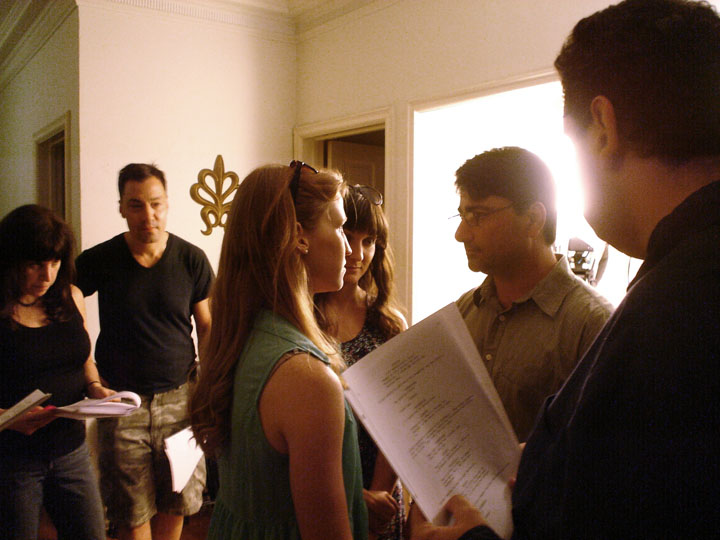
The writer emphasized the internal motivations of each character, so that the actors can emotionally connect with their part and each other.
A writer can conceive a character, but an actor brings it to life. An actor can draw on elemental themes of the story, cultural, historical, literary references, and most importantly, their own life experiences to interpret their role.

